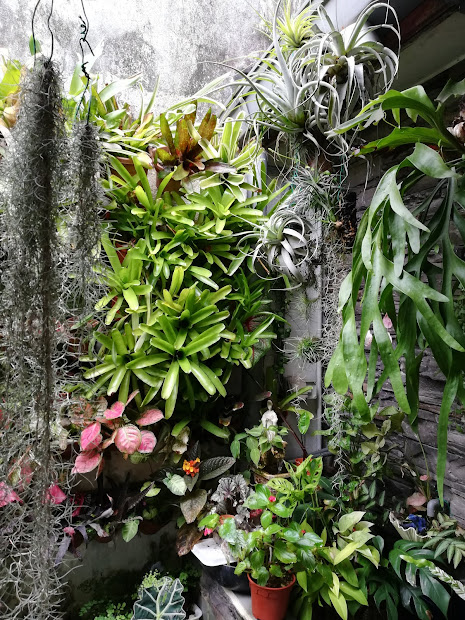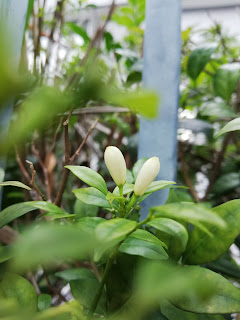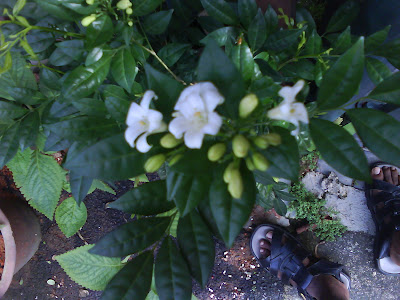
.
This is my very much neglected Cactus Garden. (If you would call it a garden in the first place)
I have been concentrating on the other garden below (pruning, replanting, repositioning, watering and all) that its just enough time to tend to just one.
.
Anyway, I'm still happy the way this one turned out. I guess lack of attention helps this one.
I really don't know much of these cactus names, I have not seen any of it bloomed. And some I had been keeping them since year 2000.
.
Below is my overall current Cactus Garden:
Some of the names are my closest guess, you are certain that their names do let me know as I can change & update them.
.


.
Name : Sedum nussbaumerianum
.
I bought this succulent (3 different types) in a very small pots (3 for RM10) Those were usually sold to new gardeners who would like to venture in cactus gardening and often time it was sort of a seedling and often they don't survive.
.
I got them on 2002 when I can still remember that I was going with my wife and friend to a garden centre and my wife was experiencing the early stages of morning sickness when she was carrying my first born son.
.
Only these two sedum plants survived and thrived.
The light green coloured one (Sedum nussbaumerianum) and the grayish green coloured one (Sedum clavatum)
.
.



.
Name: Mammillaria Species.
.
I guess these are the very common type of cactus found & sold here in many garden centres.
They are very easy to maintain but also be very vigilant about the soil and water condition - as too much water can kill the plant. I had lost 2 pots of these for some strange reasons which I have yet to identify.
.
Regardless, there are many tiny plantlets that form from this one and nothing is loss as once planted in a new pot, they populate fast and easy.
.
.
I got this plant from my my friend's girlfriend. Back then (2000) I was renting an apartment and we were bachelors. He invited her to the house and she was amazed with the amount of indoor plants placed inside. And thus, I got a gift from her ( a very nice collection of 3 different types of cactus in this pot)
.
Well, as time flies, both of them got married (Ivan & Soo Bee) and I still have this cactus as my plant collection memories. What is left of the collection now is this plant called : Tiger Jaws.
.
Tiger Jaws (pic. above)
.
1) When lacking water, they look shrivelled and brown, once watered the look refreshed (green and full) But if over watered, they tend to get rotten by the roots to top.
.
2) Like every succulent characters: Water only after the soil dries up.
.
.
.
Name: African Milk Tree (Euphorbia trigona)
.
This one is given to me by my office colleague. I think she was clearing all her thorny plants as she understood that its not good for her feng shui. Anyway, it was a small size branch when I first got it. Now its very well developed. I didn't do much of anything except watering and its look very happy for this moment.
.
Unlike other common cactus, this one has tiny leaves at the tips. Also apparently - Crown of Thorns also comes from the same species. Also the sap is considered poisonous.
.

.
Name: Pilosocereus species
.
This one as I had said before in my earlier post - collecting them from the roadside when someone had cut and threw the whole thing off. I remember it was the time when my elder son was born and my wife was still in the hospital after her labour. I got this and the variegated Dumbcane. (which grew very tall as time when by)
.
.


.
Name: Cardboard Palm, Jamaican Sago Tree (Zamia Furfuracea)
.
Bought it from a supermarket where is was sold for a good price. I had changed the pot and placed it here as I was running out of space in my main garden. I understand this is drought tolerant and don't need so much water.
.
.
.
A stem cutting of Sedum nussbaumerianum. (the light green coloured one)
They seemed to propagate easier & faster this way compared to using leaf propagation.
.
.
Name (top pic) : Sedum Clavatum
.
I had cut and placed these very nicely in a level and presented in bowl with pebbles for Christmas. The still look lovely after this 2 years except for the leggy part.
.
But prefer not to disturb it as I like the unique trailing stalks. Sort of authentic kind of look.
The plantlets are easily propagated from the leaf but very slow. Much more easier and faster results can be seen when using stem cuttings.
.
Again, like all succulents, stem cutting propagation must be done after the stalk dries up (leaving them to dry from few days to weeks) if not, they will tend to rot when in contact with wet soil.
.
.
.
Name: Mother of Thousand
.
It look leggy here, I wonder whether its a sign that is either healthy or lack of light. Surprisingly it didn't invade any of other potted plants which this plant is very famous for (considering it as an invasive plant)
.
.
New sprouts of Sedum Clavatum from the stem cuttings.
.
.
Name: Cardboard Palm
.
.
The Desert Rose don't seemed to be doing so well and I have decided to put them here. Also too much water may cause root rot and I don't want to take any chances with it.
.
.


.
I'm experimenting with some plants by placing them at the roof tiles.
These Mother of Thousand seemed like outcast (out of my garden) I found that it had been so well for these past few months. The water trail is actually coming from my A/C gutter.
.
I have seen plants growing on rain gutters and wanted to experiment these plant on my roof area. It would certainly look good with green cascading at my balcony side.



























































